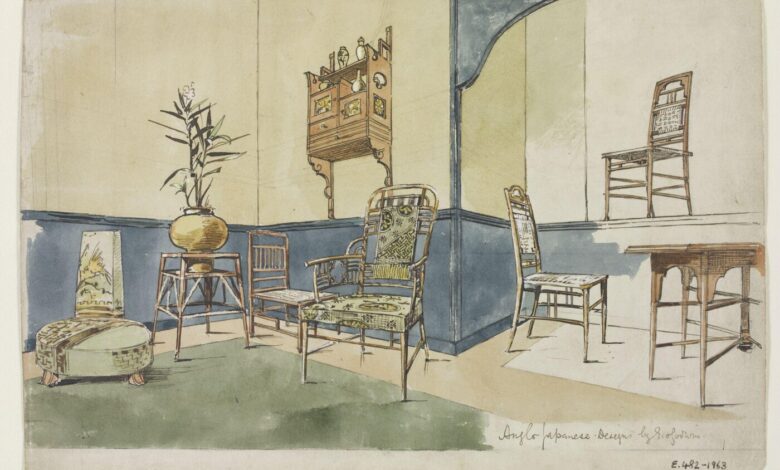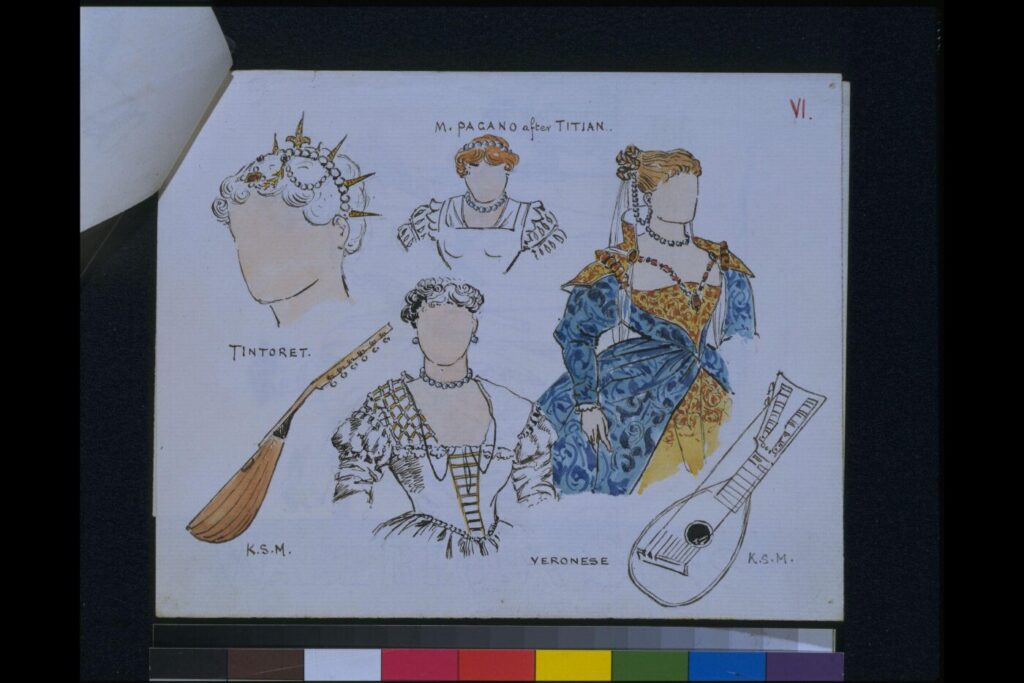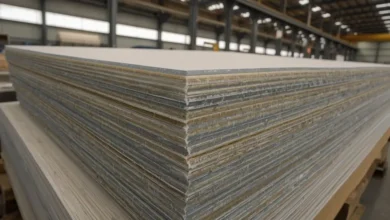EW Godwin – The Visionary Designer Who Transformed Victorian Aesthetics

Edward William Godwin, more commonly known as EW Godwin, was one of the most influential and forward-thinking designers of the Victorian era. Born in 1833, Godwin’s career spanned architecture, furniture design, interior decoration, and even stage design. His work embodied the ideals of the Aesthetic Movement, a cultural trend that valued beauty, simplicity, and artistic integrity over ornamentation and industrial mass production.
Godwin’s genius lay in his ability to bridge worlds — he merged the traditional craftsmanship of the 19th century with an emerging minimalist sensibility that foreshadowed modern design. His creations, whether buildings or furniture, emphasized harmony, proportion, and purity of form. At a time when Victorian art was often seen as ornate and heavy, EW Godwin introduced lightness, functionality, and elegance.
His fascination with Japanese art and culture led to the development of the Anglo-Japanese style, which became a defining aesthetic of late 19th-century design. Today, his influence can be traced through movements like Arts and Crafts and Modernism, making Godwin not only a visionary of his time but also a pioneer whose ideas continue to shape contemporary design thinking.
Early Life and Education
Family Background and Upbringing
EW Godwin was born in Bristol, England, into a middle-class family. From a young age, he demonstrated an aptitude for sketching and an interest in historic architecture. Growing up during the height of the Industrial Revolution, Godwin was deeply aware of the tension between craftsmanship and mass production—a contrast that would later define much of his creative philosophy.
His early exposure to Gothic cathedrals and medieval structures inspired a lifelong fascination with architectural integrity and structural honesty. This early grounding in historical forms gave him the foundation to experiment with and eventually challenge established design conventions.
Architectural Training and Early Career
Godwin’s formal architectural training began in Bristol under local architects who specialized in the Gothic Revival style. His early commissions reflected the period’s fascination with pointed arches, stone tracery, and intricate ornamentation. However, unlike many of his peers, Godwin sought to balance historical reference with modern practicality.
By the 1860s, his reputation grew, and one of his first major works—the Northampton Town Hall (1861–64)—established him as a rising star in British architecture. The building blended Gothic revivalism with a sense of proportion and lightness rarely seen in Victorian civic architecture. This project not only showcased his technical prowess but also his evolving belief that design should be both functional and beautiful, a belief that became central to all of his work.
The Evolution of EW Godwin’s Design Philosophy
The Aesthetic Movement and Artistic Vision
Godwin’s mature style flourished within the Aesthetic Movement, which championed the idea that art should exist for its own beauty, independent of moral or political meaning. His designs emphasized simplicity, elegance, and balance. He rejected the excesses of the High Victorian style and sought to create interiors and objects that felt serene, uncluttered, and refined.
Influenced by Japanese minimalism, Godwin was among the first Western designers to embrace asymmetry and restrained decoration. His friendship with artist James McNeill Whistler further reinforced his belief that every object—whether a chair or a house—should be designed with artistic harmony in mind.
Architectural Innovations
Godwin’s architecture pushed boundaries. He believed buildings should not only serve their purpose but also enrich the lives of their inhabitants. His designs incorporated light, space, and proportion in innovative ways. The now-demolished White House in Chelsea, designed for Whistler in 1877, was a testament to this philosophy. Painted in shades of white and grey, it broke from traditional Victorian color schemes and anticipated the minimalist approach of the 20th century.
Furniture and Interior Design
Perhaps Godwin’s most lasting legacy lies in his furniture design. He produced pieces that were sleek, geometric, and surprisingly modern in appearance. His use of ebonized wood, delicate proportions, and Japanese-inspired motifs created what became known as the Anglo-Japanese style. These designs became immensely popular, influencing both the Aesthetic and Arts and Crafts Movements.
His furniture was not merely decorative—it was practical and forward-looking. Today, original EW Godwin pieces are considered design treasures, often displayed in museums such as the Victoria and Albert Museum in London.
EW Godwin’s Contributions to Theatre and Costume Design

Later in his career, EW Godwin extended his artistic talents into theatre production. Fascinated by the intersection of visual art and performance, he began designing costumes and stage sets for major theatrical productions. His work with the celebrated actress Ellen Terry and actor-manager Henry Irving marked a new era in stage design, emphasizing historical accuracy and aesthetic cohesion.
Godwin’s stage designs were immersive—he treated the stage as an architectural space, ensuring that every detail contributed to the emotional tone of the play. His costume designs combined research with creativity, often drawing from historical art and literature to achieve authenticity. This multidisciplinary approach made Godwin a pioneer in theatrical design, influencing later generations of set designers and directors.
Legacy and Influence on Modern Design
The influence of EW Godwin on later design movements cannot be overstated. His emphasis on clean lines, simplicity, and craftsmanship directly inspired the Arts and Crafts Movement led by William Morris and, later, the Modernist movement of the early 20th century. His rejection of excessive ornamentation anticipated the philosophies of designers like Charles Rennie Mackintosh, Frank Lloyd Wright, and even Bauhaus architects such as Walter Gropius.
Godwin’s legacy also endures through exhibitions and collections. Many of his works—furniture, sketches, and architectural drawings—are preserved in galleries, continuing to educate and inspire new generations of designers. In a world that increasingly values sustainability and minimalism, Godwin’s vision of beauty through simplicity feels more relevant than ever.
Personal Life and Later Years
Godwin’s personal life was as vibrant as his professional one. His romantic and creative partnership with actress Ellen Terry was widely discussed in Victorian society. The couple shared not only a home but also a love of artistic experimentation. Their relationship influenced Terry’s theatrical career and Godwin’s later ventures into stage design.
In his final years, Godwin remained active as a designer and writer, contributing essays on architecture and aesthetics. Despite his death in 1886 at the age of 53, his influence persisted through his students, collaborators, and admirers. His work continues to be studied for its foresight, craftsmanship, and enduring beauty.
Conclusion
EW Godwin was more than an architect or designer; he was a visionary who reshaped the way the world perceived beauty and function. From architecture to furniture, from interiors to theatre, his creations reflected a deep understanding of harmony, proportion, and purpose. By blending Japanese simplicity with Victorian refinement, Godwin paved the way for modern design movements that continue to inspire creatives today.
His life serves as a reminder that true innovation often lies in simplicity — a timeless lesson from a designer whose work still feels modern more than a century later.
FAQs About EW Godwin
Who was EW Godwin?
Edward William Godwin (1833–1886) was a British architect, designer, and critic known for his contributions to the Aesthetic Movement and early modern design.
What was EW Godwin famous for?
He is best known for his architectural works, minimalist furniture designs, and influence on the Anglo-Japanese style.
Which are EW Godwin’s most famous works?
Key works include Northampton Town Hall and the White House for James McNeill Whistler.
How did Japanese art influence Godwin’s design?
He adopted Japanese principles of simplicity, balance, and natural materials, which defined his Anglo-Japanese aesthetic.
Why is EW Godwin still relevant today?
His minimalist approach and focus on craftsmanship resonate strongly with contemporary sustainable and modern design philosophies.
You May Also Read: Second World War Quiz Questions



